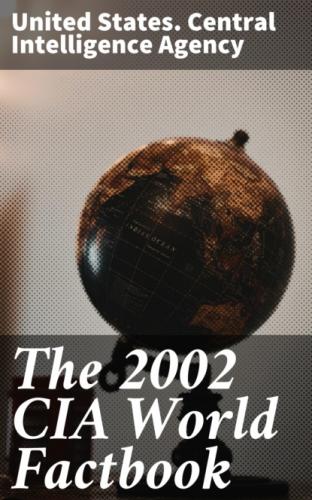Imports: $8.7 billion (2001)
Imports - commodities: machinery and equipment, chemicals, iron and steel, textiles, raw cotton, food, crude oil and petroleum products, cement
Imports - partners: India 10.5%, EU 9.5%, Japan 9.5%, Singapore 8.5%,
China 7.4% (2000)
Debt - external: $17 billion (2000)
Economic aid - recipient: $1.575 billion (2000 est.)
Currency: taka (BDT)
Currency code: BDT
Exchange rates: taka per US dollar - 57.756 (January 2002), 55.807 (2001), 52.142 (2000), 49.085 (1999), 46.906 (1998), 43.892 (1997)
Fiscal year: 1 July - 30 June
Communications Bangladesh
Telephones - main lines in use: 500,000 (2000)
Telephones - mobile cellular: 283,000 (2000)
Telephone system: totally inadequate for a modern country domestic: UHF microwave radio relay links, and some fiber-optic cable in cities international: satellite earth stations - 2 Intelsat (Indian Ocean); international radiotelephone communications and landline service to neighboring countries (2000)
Radio broadcast stations: AM 12, FM 12, shortwave 2 (1999)
Radios: 6.15 million (1997)
Television broadcast stations: 15 (1999)
Televisions: 770,000 (1997)
Internet country code: .bd
Internet Service Providers (ISPs): 10 (2000)
Internet users: 30,000 (2000)
Transportation Bangladesh
Railways: total: 2,745 km broad gauge: 923 km 1.676-m gauge narrow gauge: 1,822 km 1.000-m gauge (2000 est.)
Highways: total: 201,182 km paved: 19,112 km unpaved: 182,070 km (1997)
Waterways: up to 8,046 km depending on season note: includes 3,058 km main cargo routes
Pipelines: natural gas 1,250 km
Ports and harbors: Chittagong, Dhaka, Mongla Port, Narayanganj (2001)
Merchant marine: total: 34 ships (1,000 GRT or over) totaling 269,932 GRT/379,271 DWT ships by type: bulk 2, cargo 26, container 3, petroleum tanker 2, refrigerated cargo 1, includes s foreign-owned ship registered here as a flag of convenience: Singapore 5 (2002 est.)
Airports: 18 (2001)
Airports - with paved runways: total: 15 over 3,047 m: 1 2,438 to 3,047 m: 4 1,524 to 2,437 m: 4 914 to 1,523 m: 1 under 914 m: 5 (2001)
Airports - with unpaved runways: total: 3 1,524 to 2,437 m: 1 under 914 m: 2 (2001)
Military Bangladesh
Military branches: Army, Navy, Air Force, Coast Guard, paramilitary forces (includes Bangladesh Rifles, Bangladesh Ansars, Village Defense Parties, Armed Police Battalions, National Cadet Corps)
Military manpower - availability: males age 15-49: 37,303,372 (2002 est.)
Military manpower - fit for military service: males age 15-49: 22,139,736 (2002 est.)
Military expenditures - dollar figure: $559 million (FY96/97)
Military expenditures - percent of GDP: 1.8% (FY96/97)
Transnational Issues Bangladesh
Disputes - international: only a small portion of the boundary with India remains undelimited; discussions to demarcate the boundary, exchange 162 miniscule enclaves, and allocate divided villages remain stalled; skirmishes, illegal border trafficking, and violence along the border continue; Bangladesh has protested India's attempts to fence off high traffic sections of the porous boundary; Burmese attempts to construct a dam on the border stream in 2001 prompted an armed response halting construction; Burmese Muslim refugees migrate into Bangladesh straining meager resources
Illicit drugs: transit country for illegal drugs produced in neighboring countries
This page was last updated on 1 January 2002
========================================================================
Belize
Introduction
Belize
Background: Territorial disputes between the UK and Guatemala delayed the independence of Belize (formerly British Honduras) until 1981. Guatemala refused to recognize the new nation until 1992. Tourism has become the mainstay of the economy. The country remains plagued by high unemployment, growing involvement in the South American drug trade, and increased urban crime.
Geography Belize
Location: Middle America, bordering the Caribbean Sea, between Guatemala and Mexico
Geographic coordinates: 17 15 N, 88 45 W
Map references: Central America and the Caribbean
Area: total: 22,966 sq km water: 160 sq km land: 22,806 sq km
Area - comparative: slightly smaller than Massachusetts
Land boundaries: total: 516 km border countries: Guatemala 266 km,
Mexico 250 km
Coastline: 386 km
Maritime claims: exclusive economic zone: 200 NM territorial sea: 12 NM in the north, 3 NM in the south; note - from the mouth of the Sarstoon River to Ranguana Cay, Belize's territorial sea is 3 NM; according to Belize's Maritime Areas Act, 1992, the purpose of this limitation is to provide a framework for the negotiation of a definitive agreement on territorial differences with Guatemala
Climate: tropical; very hot and humid; rainy season (May to November); dry season (February to May)
Terrain: flat, swampy coastal plain; low mountains in south
Elevation extremes: lowest point: Caribbean Sea 0 m highest point:
Victoria Peak 1,160 m
Natural resources: arable land potential, timber, fish, hydropower
Land use: arable land: 3% permanent crops: 1% other: 96% (1998 est.)
Irrigated land: 30 sq km (1998 est.)
Natural hazards: frequent, devastating hurricanes (June to November) and coastal flooding (especially in south)
Environment - current issues: deforestation; water pollution from sewage, industrial effluents, agricultural runoff; solid and sewage waste disposal
Environment - international agreements: party to: Biodiversity, Climate Change, Desertification, Endangered Species, Hazardous Wastes, Law of the Sea, Ozone Layer Protection, Ship Pollution, Wetlands signed, but not ratified: none of the selected agreements
Geography - note: only country in Central America without a coastline on the North Pacific Ocean
People Belize
Population: 262,999 (July 2002 est.)
Age structure: 0-14 years: 41.6% (male 55,716; female 53,581) 15-64 years: 54.9% (male 73,068; female 71,368) 65 years and over: 3.5% (male 4,511; female 4,755) (2002 est.)
Population growth rate: 2.65% (2002 est.)
Birth rate: 31.08 births/1,000 population (2002 est.)
Death rate: 4.6 deaths/1,000 population (2002 est.)
Net migration rate: 0 migrant(s)/1,000 population (2002 est.)
Sex ratio: at birth: 1.05 male(s)/female under 15 years: 1.04 male(s)/female 15-64 years: 1.02 male(s)/female 65 years and over: 0.95 male(s)/female total population: 1.03 male(s)/female (2002 est.)
Infant mortality rate: 24.31 deaths/1,000 live births (2002 est.)
